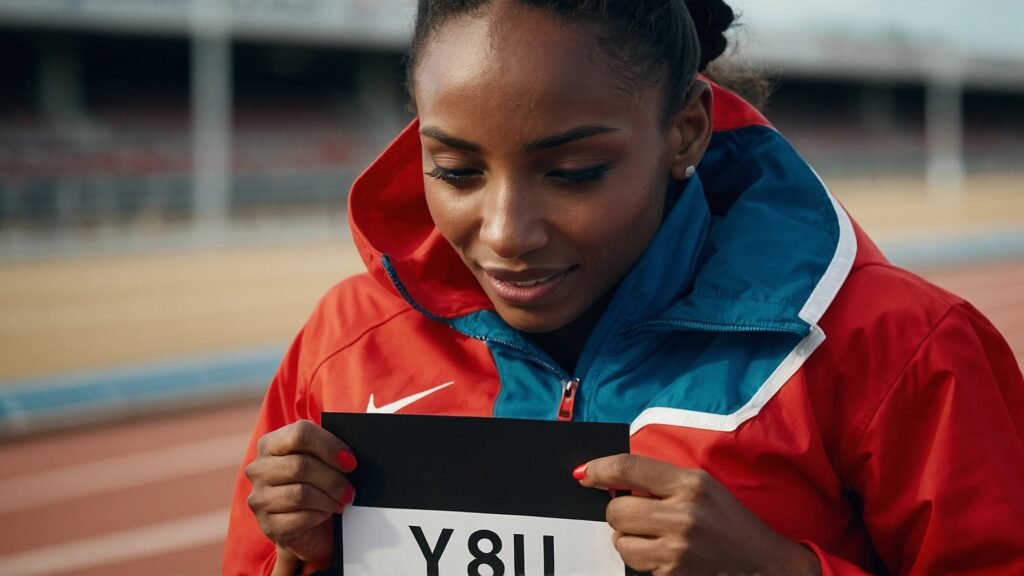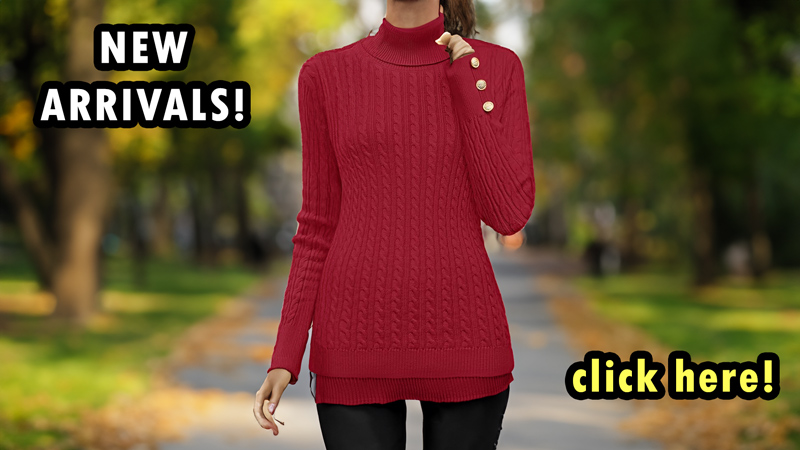Key Takeaways
- Red is a bold, attention-grabbing color that can give you an instant confidence boost when worn.
- Red outfits attract more attention, so save bright reds for days when you want all eyes on you.
- Darker reds like maroon or burgundy have a more subtle effect while still exuding confidence.
- Red is traditionally associated with love, passion, aggression, and vitality.
- Women tend to feel more attractive and desirable in red. Men perceive women in red as more sexually receptive.
- Red clothes can increase your perceived status and authority in the workplace. But too much red can also seem aggressive.
- Red shirts make athletes seem more dominant, intimidating, and more likely to win.
- Red outfits can instantly lift your mood, energy and motivation levels.
- Red has the longest wavelength of visible light, making it one of the most attention-grabbing colors.

Research indicates that wearing red clothing can significantly boost your confidence, convey a sense of power, and influence how others perceive you. But what makes the color red have such a powerful psychological effect? Let’s delve into the unique psychological benefits and effects of wearing red clothes.
The Bold, Attention-Commanding Properties of Red
Red has the longest wavelength of all visible light colors, making it the most vibrant and eye-catching shade in the color spectrum. Shades of red, along with oranges and yellows, naturally seem to advance toward the viewer, giving red a powerful, energizing presence. Wearing red clothing can make you feel instantly more alert, confident, and engaged. Red outfits are proven to attract more attention and gazes than any other color, making them ideal for making a bold fashion statement. If you want to enter a room feeling empowered and ready to stand out, choose striking red attire to turn heads and boost your confidence.
Red Grabs Attention First
The human eye processes colors in a specific order, detecting red hues first, followed by yellow, green, and blue. Because red is noticed before other colors, it is the most attention-grabbing shade. This is why red is commonly used for stop signs, warning signals, and important notifications. Wearing red clothing makes you stand out in a crowd, making it an ideal choice when you want to attract attention. However, keep in mind that bright red outfits can sometimes appear bold or overwhelming.
Harnessing the Power of Red
Shy individuals can wear red clothing to help them step out of their comfort zone and stand out. Since red attracts attention, it can provide reserved or introverted people with a much-needed confidence boost. However, introverts who prefer subtlety might choose deeper shades like maroon or red-purple to avoid drawing too much attention. No matter your personality type, wearing red can help you make a bold and memorable first impression.
Too Much Red Can Overwhelm
Red is a color that naturally draws attention, but wearing red from head to toe can create sensory overload and may appear aggressive or overpowering to others. For optimal style, incorporate red fashion elements through accessories, underlayers, or clothing accents. A striking red statement necklace, bold red lipstick, or a pair of red heels lets you embrace the power of red fashion without overwhelming your look.
Red’s Traditional Symbolism and Meaning
For centuries, the color red has held powerful symbolic significance in cultures around the world. Discover some of the most important meanings and cultural associations linked to this vibrant and captivating color.
Passion, Sexuality and Love
Red is strongly linked with carnal passion, sexuality, and romantic love. Throughout history, red has become the color associated with the heart, lust and eroticism. In many Asian cultures, red is the traditional bridal color. Red roses symbolize love and desire. Red lingerie is considered alluring. Red is a stimulating color that can excite amorous feelings.
Vibrancy, Vitality and Action
The vibrant nature of red exudes vitality and celebration. In Hindu culture, red symbolizes purity and the life force. Movement and action are also embodied in red’s bold nature. Yield signs, fire trucks and exit signs all harness the urgent properties of red. Wearing red can give you an energizing jolt of this vibrant spirit.
Aggression, War and Danger
While red represents romance, it can also signify combat and war. Blood, fire, and violence are commonly associated with red thanks to its ties to aggression and danger. Stop signs, ambulance lights and cuts of red meat remind us of blood, wounds and bodily harm. Red alerts us to hazards in our environment. Red provokes urgent, instinctual reactions.
Table of Red’s Complementary Color Palettes
| Shade Name | Color | Best Paired With | Occasion Suggested |
|---|---|---|---|
| Classic Red | Navy Blue, Crisp White | Evening Events | |
| Deep Crimson | Gold, Black | Formal Occasions | |
| Light Rose | Soft Gray, Lavender | Daytime Casual | |
| Ruby Red | Emerald Green, Beige | Festive Celebrations | |
| Fiery Scarlet | Charcoal, Bright Teal | Summer Outings | |
| Muted Maroon | Olive Green, Pale Gold | Autumn Gatherings |
The Powerful Psychology Behind Wearing the Color Red
Red is captivating. It demands attention, incites passion and carries a seductive allure all its own. This fiery hue holds a special place in our collective consciousness thanks to its bold symbolism and ability to stir our emotions in powerful ways. Let’s explore the unique psychological impacts of wearing red clothing and how to strategically harness red’s vitality for self-assurance.
Donning red makes a statement unlike any other color. It conveys vibrancy, vigor and vivacity. Throughout history, red has been associated with love, fertility, energy, war, power and danger. Traditional meanings give red an exciting, intimidating edge.
Red immediately catches the eye and jump-starts the senses. Being the longest wavelength of light, red appears closer than other colors. It advances toward the viewer for a 3D effect. Something primal in us recognizes red as stimulating and important.
Studies reveal that wearing red has tangible effects on mood, motivation, perceived power, attractiveness and even behavior. Here are some of the most intriguing psychological impacts:
Confidence – People report greater self-assurance and confidence when wearing red. Red conveys authority and prestige. Judges favor red-wearing talent show contestants.
Allure – Women seem more attractive and sexually receptive in red. Men perceive higher levels of female desirability and sensuality in red outfits.
Motivation – Exposure to and wearing red improves motivation and performance on detailed tasks requiring focus.TESTS Red enhances willpower, determination and drive.
Aggression – The combative symbolism of red also shows up in increased aggression and escalated conflicts while seeing or wearing red. Red provokes instinctual reactive responses.
Clearly, red holds sway over our minds. But how can this color wisdom be applied in empowering ways? Here are some tips for leveraging red for confidence without overdoing it:
Wear red accents – A bold red purse, lipstick or scarf allows you to subtly stand out while avoiding full red overload.
Make it an undershirt – Try layering a red tee under a black blazer or wearing red socks with neutrals. Inner red still packs a punch.
Stick to darker shades – Maroon or burgundy offer classy, mature red choices perfect for the office. Save those fire engine reds for parties.
Time it strategically – Debut a new red dress on a key date when you want maximum appeal. Pull out a red power suit for an interview or presentation.
Avoid all red for sensitive settings like grief, tension-filled discussions or big negotiations.
Have a trusted red item on standby for an instant vitality boost when you need fiery inspiration.

How Red Affects Moods, Feelings and Behaviors
Studies reveal that wearing red produces measurable changes in mood, self-perception, motivation, perceived attractiveness and even performance. Here’s an overview of red’s notable psychological impacts.
Confidence and Self-Esteem Boost
Donning red clothing provides an instant spike to confidence and self-assurance for many wearers. Red’s attention-getting properties translate into a heightened self-awareness and boost in perceived status. Red can make you feel bold, energetic and ready for anything. Athletes choose red to feel dominant and intimidating.
Increased Desirability and Sex Appeal
Red is strongly tied to romance and passion. Women report feeling more attractive, desirable and sexually excited when wearing red. Men perceive women in red as more receptive to amorous advances. For many, red carries connotations of fertility and heightened sexual appeal.
Motivation and Performance Enhancer
Seeing red mobilizes us to take action thanks to its links to energy and stimulation. Tests reveal that wearing red improves motivation and performance on tasks requiring detail and precision. The color gives us feelings of empowerment and ambition to achieve our goals.
Aggression Trigger
The combative connotations of red also translate into measurable boosts in aggression when people see or wear red. Red is associated with combat, dominance and danger. People are more likely to escalate conflicts while seeing red or dressed in red themselves.
Authority and Power
In competitive contexts, red clothing can increase perceived authority, rank and dominance. Wearing red makes individuals seem more impressive and competent. Judges on competitive TV shows like The Voice more frequently choose contestants dressed in red outfits.
How to Harness the Power of Red for Confidence
You can strategically leverage red’s positive effects to get an instant mood and motivation boost. But be wary of seeming too aggressive or overbearing by overdoing this bold color. Here’s how to wear red for a confidence lift.
Opt for Red Accessories
Carry a red purse, wear a bright red lipstick, or don a red statement necklace. Pops of red through accessories provide an energizing focal point without going overboard. Red shoes like heels or sneakers also inject vibrant confidence.
Try Red Layers
Wear a red camisole under a black dress, or layer a red cardigan over a neutral outfit. Inner layers of red still provide a confidence boost without seeming too ostentatious. Bright red nails or red glasses have a similar effect.
Choose Redworkout Gear
Energizing red workout clothes can improve athletic performance and motivation. Red makes a bold statement for sports uniforms. Don red gear for an edge in competitive activities.
Stick to Darker Shades for Professionalism
Maroon, burgundy and oxblood red offer professional options. These darker reds project maturity and competence without seeming too flashy. Save bright reds for social settings and opt for dark reds at the office.
Limit Red for Sensitive Situations
Avoid wearing head-to-toe red for sad occasions like funerals where it may seem inappropriate. Also refrain from too much red for delicate discussions where aggression could escalate conflict.
Have a Go-To Red Item
Keep a favorite red outfit, dress or blazer on hand for an instant mood booster on low-energy days. Make red your personal power color whenever you need a vitality and confidence lift.
Be Strategic With Timing
Save bright reds for occasions where you want to be bold and stand out from the crowd. Debut a new red dress for maximum impact on special nights out.

Additional Color Psychology Effects
While red has the most dramatic psychological impact, other colors also evoke mind and mood associations. Here’s an overview of additional effects of colors on emotions.
Blue for Peacefulness
Cool, calming blue evokes feelings of relaxation and tranquility. Blue conjures images of flowing waters and serene skies. The color inspires mental clarity and stability. Lighter blues especially promote inner peace.
Purple for Luxury
Traditionally associated with royalty and ceremony, purple connotes luxury, ambition and extravagance. Light purples (lavender) inspire sentimentality and nostalgia as well. Darker purples like amethyst seem more regal and upscale.
Yellow for Happiness
Sunny yellow stimulates feelings of friendliness, optimism and cheer. Its illuminating brightness reminds us of sunshine and warmth. But too much yellow can seem abrasive. Soft golden yellows promote joy without overstimulation.
Orange for Socializing
Vibrant orange combines the energy of red and joy of yellow. Artsy, creative types favor orange for its playful spirit. It inspires socialization and connectivity. Orange boosts our appetite for adventure and conversation.
Pink for Romance
Pretty in pink represents femininity, innocence and hope. Pastel pinks evoke first loves and whimsical femininity. Hot neon pinks have an energizing, flirty vibe. Pink promotes gentle romance over sexuality.
Green for Harmony
Earthy greens conjure thoughts of nature, renewal and life. Green promotes balance, harmony and resilience. Forest greens offer a restorative, peaceful escape, while lime greens are more stimulating.
Brown for Reliability
Dependable brown relates to resilience, hearth and home. It reminds us of timber, earth and stone. Brown conveys maturity, warmth and dependability. The color inspires deep connections to nature.
Black for Power
Authoritative black signifies strength, exclusivity and sophistication. But black can also represent menace or evil when taken to extremes. Subtly incorporate black for seriousness.
White for Purity
Angelic white embodies cleanliness, neutrality and innocence. It offers a blank canvas feeling. Crisp whites refresh while warm creams soothe. White projects virtuous sincerity.
Summary
- Red is attention-grabbing, energizing and confidence boosting
- Red increases perceived status, desirability and sex appeal
- Red boosts motivation and assertiveness but may also provoke aggression
- Dark reds like maroon offer subtler power than bold reds
- Red accessories add pops of vitality without going overboard
- Each color has unique psychological effects on mood and emotion

Conclusion
Red has an exceptional power to capture attention while stimulating feelings of passion and vibrancy. Psychological studies confirm that simply donning red clothing triggers measurable shifts in perceived confidence, allure and motivation levels. Red manifests both our amorous and competitive natures.
This bold, primary color provides an instant ego boost, but requires some strategic finesse so as not to overwhelm. Clever incorporation of red into your wardrobe allows you to take advantage of its potent mind-altering impacts. So the next time you need a quick confidence lift before a big presentation or first date, turn to red for an instant infusion of vitality and bravado.
Frequently Asked Questions
How does red affect human psychology?
Red has been shown to increase confidence, feelings of power, arousal, attention, and even aggression levels. It is an alarming, stimulating color that instantly catches our eye and provokes a faster heartbeat and quicker reactions. In competitive or romantic settings, red gives a dominant, bold edge.
What do different shades of red mean?
Lighter reds like cherry tend to seem playful, immature, or feminine. Dark shades like maroon or burgundy have a sophisticated, elegant, mature vibe. Bright, warm reds are energetic. Cool reds with blue undertones seem more refined. Pink-leaning reds evoke romance.

What colors go well with red?
Red goes strikingly with neutrals like black, white, gray, and camel. Blue is red’s complementary color, creating high-contrast pairings. Green, purple, pink, and gold also combine beautifully with red. Avoid matching red with orange.
How can I wear red without being overpowering?
Subtly incorporate red through eye-catching accessories like shoes, lipstick, or a handbag. Wear red as an undershirt beneath neutrals. Stick to darker, more muted reds like maroon or oxblood for a softer effect. Use red in small touches only.
When should I avoid wearing red?
Avoid bright reds at somber occasions like funerals or in delicate emotional situations where aggression could escalate. Red is also risky for important meetings where you want to seem professional and restrained. Reserve red for social settings.
Can men wear red clothing?
Absolutely. Red ties and suits project power and authority on men. Darker reds like burgundy add a bold accent. Red jackets, sneakers, or dress shirts can make men seem more dominant and charismatic. Just avoid choosing only red.
How does red impact workplace performance?
Studies show people wearing red often excel at detail-oriented tasks requiring focus and precision. Judges also favor competitive candidates dressed in red. But red is risky for negotiations or delicate discussions.

How long do the effects of wearing red last?
The psychological impacts of wearing red are instant but short-lived. The energizing, confidence-boosting effects typically last while the red item continues to be worn. So you may need to add pops of red throughout an event for sustained impacts.

Sam Goldman, with his intuitive grasp on the art of color selection, navigates the vibrant tapestry of fashion shades, ensuring each ensemble reflects the pulse of modern trends. His knack for crafting unique yet cohesive color combinations unravels the complexities of the fashion spectrum. Beyond being a mere sentinel, Sam’s dedication transforms every reader’s wardrobe journey into a harmonious blend of contemporary elegance and timeless allure. Dive into his writings and emerge with a refreshed perspective on fashion colors.
Reviewed By: Joanna Perez and Anna West
Edited By: Lenny Terra
Fact Checked By: Matthew Mansour
Photos Taken or Curated By: Matthew Mansour

